Research Report from the Jan. 9, 2009 Winter Immunity Event
Natural Healing and Respiratory Disorders: a Chronobiological Approach
Wallace Chun, M.D.1, Prof. Hong Liu, Grandmaster2, Lynn M.Thomas, Ph.D.3, Lucy Ryan, Ph.D.4, Amina Miyasaki, Pua Kekine, Chydelle Mokuahi, Stephanie S. Eggert, M.A., Millanie Mattson, Joyce Settle, Irene Au
This is a report of studies done to test the hypothesis that herbal patches improve the quality of life for those suffering from respiratory disorders. Ten participants in Honolulu and fourteen participants in Lihue were studied at the 2009 Winter Respiratory/ Immunity Events held on Oahu and Kauai, Hawaii.
Measurements were taken before the patches were applied and forty days later. Forced Expiratory Vital Capacity (FVC) and Forced Expiratory Volume in one second (FEV1) were the lung functions measured with Welch Allyn Pneumocheck Spirometer, Model No. 61000. IgG and eosinophil levels were measured by standard clinical laboratory methods. Energy flow in the fingers were measured by Gas Discharge Visualization (GDV) Camera Pro and software.
Three herbal patches were applied to specific acupuncture points (acupoints) and were left on for forty-eight hours. New patches were applied to the same acupoints on the third, fifth, seventh and ninth days after the first patches were applied.
Contents: Menthol, camphor, methyl salicylate, Borneolum syntheticum, Rhizoma kaempferiae, Radix angelicae dahuricae, and diphenhydramine hydrochloride.
Application: Lumbar region of the back and on both legs below the kneecap as described below:
Patch Number 1
Western Medicine: Lumbar vertebrae L1 and L2
Chinese Medicine: Acupoint Shensu (Urinary Bladder #23)
Patch Number 2
Western Medicine: 3 inches below the left kneecap in the depression between the tibia and the fibula
Chinese Medicine: Acupoint Foot three mile ST 36 on the left calf (Stomach Meridian)
Patch Number 3
Western Medicine: 3 inches below the right kneecap in the depression between the tibia and the fibula
Chinese Medicine: Acupoint Foot three mile ST 36 on the right calf (Stomach Meridian)
The FVC for twelve participants improved and was worse for the remaining twelve. The FEV1 for eleven participants improved and was worse for the remaining thirteen. An analysis of the data showed that the changes were not statistically significant.
The IgG levels for fifteen participants improved, eight participants were worse and one remained the same. The differences in the levels were statistically significant. See Table I.
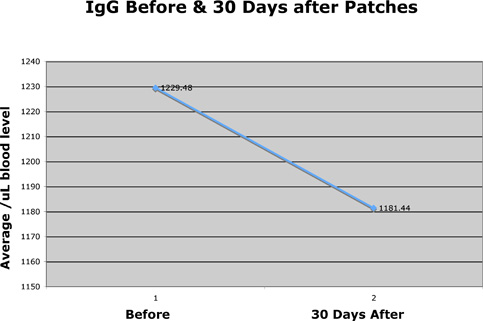
Table 1. IgG before & 30 days after patches
The eosinophil levels for eleven participants improved and eight participants were worse.
The improvement in energy flow 30 days after patching was complete is shown for two participants (see Case Studies below) in Table 2.
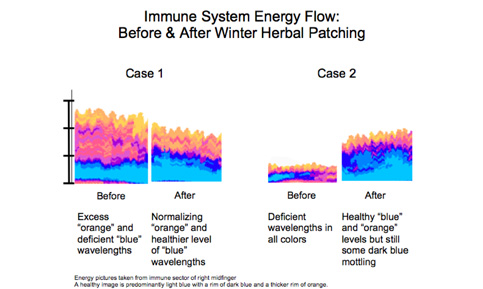
Table 2. Immune system energy flow: before & after winter herbal patching
The first case study is of a twenty-year old Caucasian female who was diagnosed with asthma when she was two years old. She has been allergic to dust, mites, pollen and cats for the past ten years. Before the patches were applied, she had asthma symptoms once a week, allergy problems three times a week and took medications (meds) daily. A month after the patches were applied, she had asthma symptoms once in ten days, allergy problems twice in ten days and her sneezing was reduced from all day long to only in the morning. She feels so much better, does not take any asthma meds (used to take two meds daily), and does not take any allergy meds (used to take one daily). Her eosinophil count was 662 (normal range is 0-400) before the patches and 92 a month after the patches.
The second case study is of a fifty nine year old Asian female who was diagnosed with asthma two years ago. She was a smoker for forty years and quit five years ago. She has allergies to pollen and food the last five years and attributed this to hormonal changes in her body due to menopause. Before the patches, she had asthma symptoms daily and was taking asthma meds two times a day. After the patches, she had symptoms two days in thirty and decreased her meds from two times a day to two to three times in forty days. Her eosinophil count was 546 before the patches and 428 after the patches.
While the objective data from spirometry for all the participants studied was not statistically significant, the case studies clearly show that two participants had remarkable results after the patching. Other positive case studies were reported but the two above are very outstanding.
Much of the philosophy of TCM reflects the classical Chinese belief that the life and activity of individual human beings have an intimate relationship with the environment on all levels. As a result, Yin – Yang Theory and Five Element Theory are the basic theories that TCM uses to explain physiological activities and pathological changes of the human body and to serve as a guide to clinical treatment.
Yin – Yang Theory
This is the fundamental principle and the most important theory of TCM, and it underlies all physiology, pathology and treatment. Yin and yang represent two opposite aspects of every object and its implicit conflict and interdependence. When they are in dynamic balance and relating harmoniously, good health follows. When they are not in balance, disharmony and disease follow.
Five Element Theory
Wood, fire, earth, metal and water are the basic substances that make up the material world, are an indispensable part of daily life and are in a constant flux due to the dynamic movement and mutual antagonism of yin and yang factors.
Meridians (systems, channels)
The human body is a small universe with twelve pairs of major meridians (12 on the right and 12 on the left), eight extraordinary meridians, fifteen collateral channels and twelve divergent channels that form a set of complete and sophisticated interconnected systems (channels). The systems usually work in balance to maintain the healthy functions of the human body.
Qi or Ch’i (breath, life force, vital energy, spiritual energy)
The life-process or “energy flow” that sustains all living things. Qi circulates in the body through the meridians or channels.
Acupuncture, Acupoints
Most of the main acupuncture points (acupoints) are found on the twelve pairs of major meridians and on two of the eight extraordinary meridians. Stimulation of the acupoints by needling, herbal patching or moxibustion regulates the flow of qi and thus diseases are treated.
TCM uses many modalities for treatment, but this discussion is limited to the use of herbal patches during the winter months. Some of the principles of ecliptic and chronobiology have been used in TCM for many years. Ecliptic is the path that the sun follows across the sky over the course of a year. In summer, the sun’s path is longest, resulting in the longest and hottest days of the year. In winter, the sun’s path is shortest, resulting in the shortest and the coldest days of the year. For many years TCM has used the hottest and the coldest days of the year to treat respiratory disorders. On the hottest days of the year, the yang energy on earth is the highest of the year, and during the coldest days, the yin energy on earth is the highest.
In TCM, kidney energy controls the yin energy in the body. As yin energy on earth is highest during the winter months, it is best to increase kidney energy during the coldest days of the year. The application of the patches at acupoint UB 23 is to stimulate kidney energy to help the immune system and at acupoint ST 36 is to treat immune deficiency. The nine coldest days of 2009 began on January 9 so the patches were first applied on that day. There is an intimate and interdependent relationship between organ systems, such as between the lungs and kidneys, the liver and heart, and the stomach and the lungs. These are called “mother and son” relationships as the health of one affects that of the other, e.g. if the mother is weak, it cannot support the child.
This is the first time that herbal patches have been used for ten consecutive days and preliminary results (the two case studies reported) are encouraging. Further analyses of the objective data and of the subjective reports by participants are in progress and a report of the findings is forthcoming.
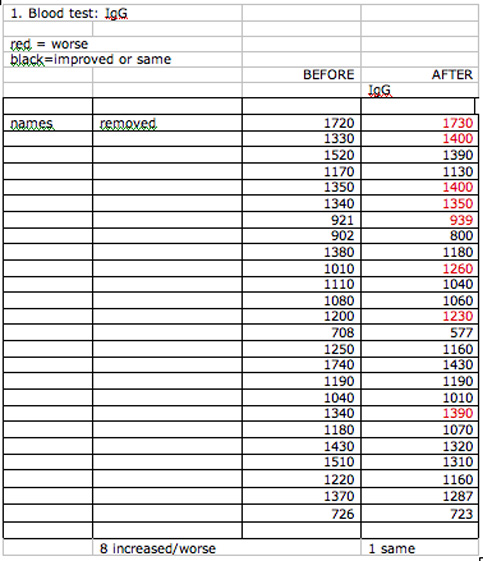
Blood Test Results: IgG
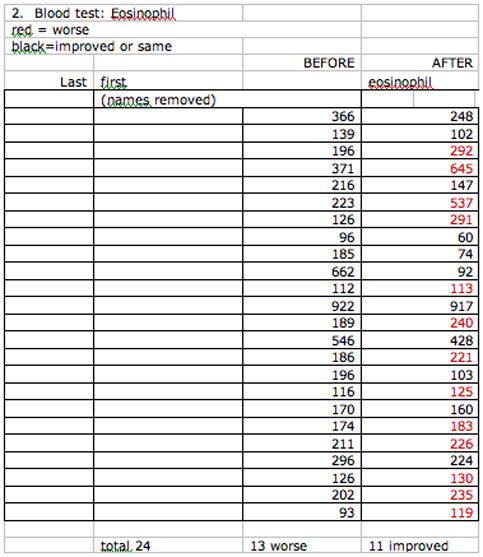
Blood Test Results: Eosinophil
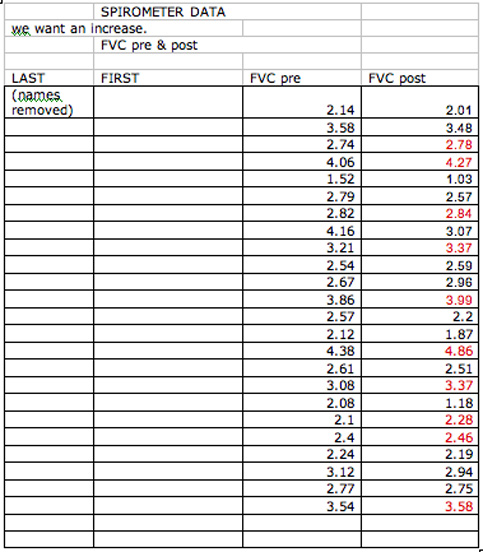
Spirometer Data
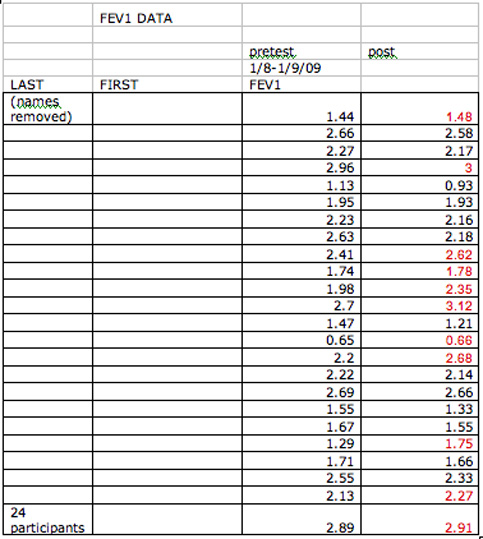
FEV1 Data